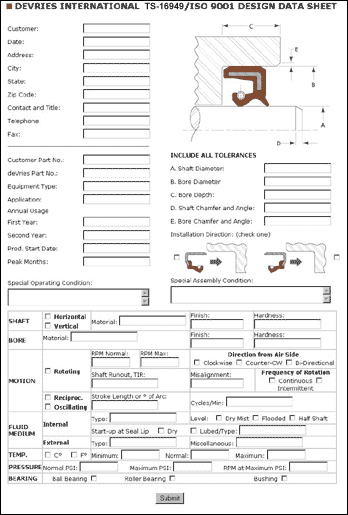|
|

  |
 |
 |
 APPLICATION OF AN OIL SEAL APPLICATION OF AN OIL SEAL
For an oil seal to function properly, it is essential that the three components of an assembly—the
shaft, the bore, and the seal itself—interact correctly. The bore into which the seal is pressed and
the shaft rotating within the seal are major determinants of the success of a leak-free assembly.
Therefore, when a seal is designed, the following are some of the factors to consider: the shaft-to-seal
and bore-to-seal interfaces, the dynamic and static eccentricities between shaft and bore, temperatures,
the media to be sealed, shaft speed and finish, and the service life of the assembly.
The life of the seal itself is determined by the following factors: mechanical wear
on the lip; elastomer deterioration from exposure to the media being sealed; exposure
to high temperatures; and the lip’s inability to follow the shaft’s eccentricity, which often results
from the wear of other components. Exposure to high temperatures greatly accelerates wear and loss of
elastomeric properties. However, in such cases, dramatic improvements in seal life can be attained by selecting
elastomers of higher temperature capabilities such as Viton. Because Viton has a much wider temperature range,
its use can extend seal life even for applications in which nitrile or polyacrylate would be otherwise acceptable.
The automotive industry has shown tremendous improvements in engine seal life by utilizing such high-performance
elastomers.
Click image below for Seal Application Design Data Sheet

|
|
|
|













